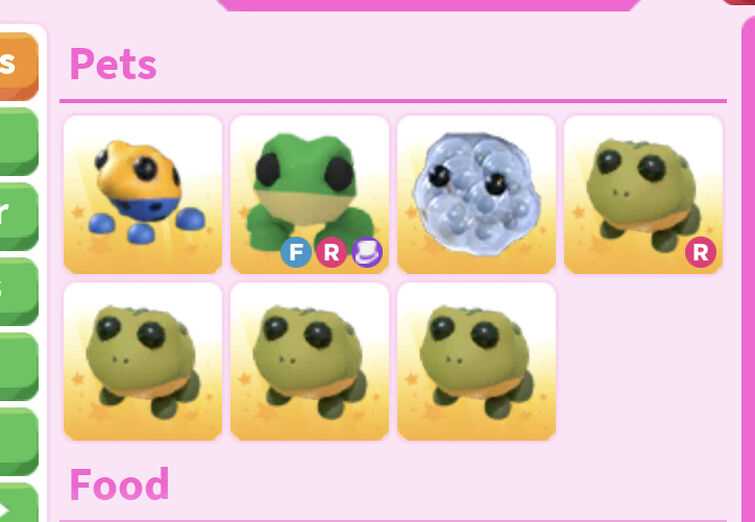
When adopting a poison dart frog, it’s crucial to have the proper setup and equipment to ensure their well-being. These frogs require a terrarium with specific temperature and humidity levels, as well as plenty of hiding spots and foliage for them to feel secure. It’s also important to provide them with a diet of small insects, such as fruit flies and pinhead crickets.
Habitat and Natural Environment
These frogs are typically found in rainforests, swamps, and tropical environments. They inhabit areas with dense vegetation, such as leaf litter, fallen logs, and rocks. They prefer areas with a high humidity level, as it is essential for their survival.
The Poison Dart Frog is a member of the Dendrobatidae family, which consists of nine genera and over 170 species. Each species has its specific habitat and natural environment, but they all share similar characteristics and behaviors.
These frogs are also known for their small size, with adults typically ranging from 1 to 2.5 inches in length. They have a rounded body shape, long legs, and smooth skin.
The habitat and natural environment of the Poison Dart Frog play a crucial role in its survival. The dense vegetation provides ample hiding places and protection from predators. The high humidity level ensures that the frogs’ skin remains moist, enabling them to breathe through their skin.
| Key Points | List |
|---|---|
| 1 | The Poison Dart Frog is native to Central and South America. |
| 2 | They inhabit rainforests, swamps, and tropical environments. |
| 3 | They prefer areas with dense vegetation and high humidity. |
| 4 | They have a small size, ranging from 1 to 2.5 inches in length. |
| 5 | Their habitat provides hiding places and protection from predators. |
| 6 | The high humidity level ensures their skin remains moist. |
Appearance and Coloration
The Poison Dart Frog is a small and colorful amphibian that belongs to the Dendrobatidae family. It is known for its vibrant and striking coloration, making it one of the most visually appealing creatures in the animal kingdom. The colors of these frogs range from bright reds, blues, oranges, yellows, and greens, with various patterns and combinations.
Colorful Warning

A Variety of Patterns
The patterns on the skin of the Poison Dart Frog vary between species and can be intricate and captivating. Some frogs have spots, stripes, or bands, while others have a solid color. These patterns not only contribute to their beauty but also help to differentiate between different species and individuals.
The vibrant coloration and patterns of the Poison Dart Frog serve a dual purpose. On one hand, they are a warning to predators, but on the other hand, they also act as a form of camouflage. In their natural habitat of tropical rainforests, these frogs blend in with the bright colors of flowers and plants, making it difficult for predators to spot them.
Size and Shape
The Poison Dart Frog is relatively small, with the average size ranging from 1 to 2 inches (2.5 to 5 centimeters) in length. Their bodies are slim and elongated, with smooth skin. This streamlined body shape allows them to move quickly and efficiently through the forest floor.
Overall, the appearance and coloration of the Poison Dart Frog make it an incredibly fascinating and beautiful creature to observe. Its striking colors, intricate patterns, and small size contribute to its allure and make it a popular choice for pet owners and nature enthusiasts alike.
Toxicity and Defense Mechanisms
Defense Mechanisms: These frogs have developed various defense mechanisms to protect themselves from predators. Their bright colors serve as a warning to potential predators that they are toxic and should be avoided. The toxins that these frogs produce are derived from the ants, termites, and other small arthropods that they consume in the wild. The toxins are then stored in their skin and serve as a chemical defense against predators.
When threatened, poison dart frogs can release their toxic skin secretions as a defense mechanism. The toxins are highly potent and can cause paralysis or even death in predators. This makes them one of the most poisonous creatures on the planet.
List of the Nine Poison Dart Frog Species that are Safe to Adopt:
- Dendrobates auratus
- Dendrobates azureus
- Epipedobates anthonyi
- Epipedobates tricolor
- Phyllobates bicolor
- Phyllobates lugubris
- Phyllobates terribilis
- Ranitomeya imitator
- Phyllobates vittatus
These species have lost their toxicity in captivity due to the absence of their natural diet. They make great pets for those who are fascinated by their vibrant colors and unique patterns.
Diet and Feeding Habits
One interesting fact about Poison Dart Frogs is that they are capable of eating up to nine prey items in a single feeding session. They have a specialized feeding mechanism that allows them to consume multiple insects at once. This is made possible by their long, sticky tongue, which they use to catch and capture their prey.
| Common Prey | Occasional Prey | Rare Prey |
|---|---|---|
| Ants | Mites | Fruit flies |
| Termites | Springtails | Centipedes |
| Spiders | Moths | Aphids |
| Beetles | Butterflies | Slugs |
Reproduction and Parenting
Reproduction in Poison Dart Frogs typically occurs during the wet season when the availability of food and water is abundant. Male frogs use elaborate courtship displays to attract females. These displays often involve vocalizations, intricate movements, and vibrant color displays.
Once a female is enticed, the male will lead her to a suitable nesting site, such as a leaf or a bromeliad plant. The male then carefully prepares the site by cleaning it and depositing a sperm packet. The female will then lay a cluster of eggs, which the male fertilizes with the sperm packet.
The male takes on the responsibility of guarding the eggs until they hatch. He keeps the eggs moist by transporting water to the nesting site using his sensitive skin, ensuring the survival of the developing embryos. The male frog will protect the eggs from predators and make sure they receive enough oxygen by occasionally fanning them with his hind legs.
After about two weeks, the eggs hatch into tadpoles. The male carefully transports each tadpole to a nearby water source, such as a small pool or a stream. Once in the water, the tadpoles start their journey of metamorphosis, gradually developing into adult frogs.
Parental care does not end with the transport of the tadpoles. Even after transformation into frogs, the parent frogs continue to care for their offspring. They ensure the survival of their young by guarding them against predators, providing them with food, and guiding them to suitable habitats.
It is remarkable to see the level of dedication and care demonstrated by Poison Dart Frogs towards their offspring. Their unique parenting behavior sets them apart from many other amphibian species and contributes to their overall survival in their natural habitats.
Popularity as Pets
The Poison Dart Frog is a popular choice for many pet owners, thanks to its vibrant colors and unique appearance. These frogs are often sought after by collectors and enthusiasts who are captivated by their beauty and fascinating behaviors.
One of the reasons why Poison Dart Frogs are so popular as pets is their stunning coloration. Their bright and vibrant hues serve as a form of warning to potential predators, indicating their toxicity. These colors make them stand out among other amphibians and add a touch of exotic beauty to any collection.
It’s worth mentioning that not all species of Poison Dart Frogs are suitable as pets, as some are more challenging to care for than others. It’s essential to do thorough research and consult with an experienced reptile or amphibian veterinarian before deciding to adopt one.
Conservation Status and Threats
The Poison Dart Frog is a species that requires special care and attention due to its delicate nature and potential for toxicity. Currently, the adopt,me community is playing a crucial role in the conservation efforts of these unique creatures. By educating individuals about the importance of preserving their natural habitats, more people are becoming aware of the need to protect the Poison Dart Frog and its ecosystem.
The International Union for Conservation of Nature (IUCN) has classified the Poison Dart Frog as a species of least concern. This designation means that, while not currently at risk of extinction, the frogs still face several threats that need to be addressed to ensure their long-term survival.
Some of the main threats to the Poison Dart Frog’s population include habitat loss, illegal pet trade, pollution, and climate change. These factors have led to a decline in the number of suitable habitats for the frogs to thrive, as well as an increase in their capture for the pet trade.
Pollution, including water and air pollution, also poses a threat to the Poison Dart Frog’s population. Their sensitive skin absorbs toxins from the environment, making them particularly vulnerable to contaminants. In addition, climate change and its associated effects, such as changes in temperature and rainfall patterns, can negatively impact the frogs’ reproductive cycles and food availability.

I’m Lena Adams—a product of an unconventional upbringing in the African wilderness. My father, a daring explorer of African wildlife, sparked my fascination with reptiles, a passion that intertwined with the tragic loss of my mother during an expedition, leaving an indelible mark on my life. Driven to understand the creatures that captivated my parents, I embarked on my journey, sharing insights about reptiles, frogs, and lizards on my website. Through my explorations and conservation efforts, I honour my family’s legacy while seeking connections—to the creatures, nature, and the mother whose presence I yearn to understand.
